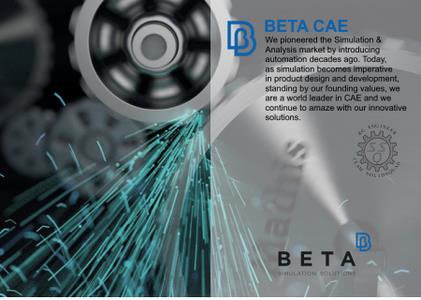BETA-CAE Systems 22.1.4 Win x64
"softddl.org"
6-10-2022, 12:54
-
Share on social networks:
-
Download for free: BETA-CAE
-
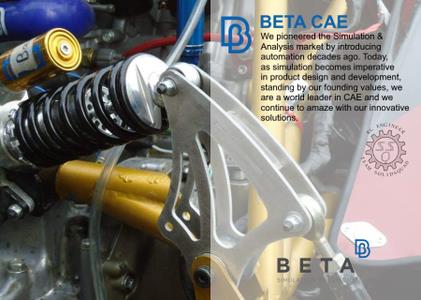
BETA-CAE Systems 22.1.4 | 2.2 Gb
Product:BETA CAE Systems
Version:22.1.4
Supported Architectures:x64
Website Home Page :www.beta-cae.com
Languages Supported:english
System Requirements:Windows *
Size:2.2 Gb
BETA CAE Systems announces the release of 22.1.4. Offering numerous enhancements and adjustments on recently tracked issues, this version is addressed towards those who have not migrated to the v23.x.x branch.

BETA-CAE Systems 22.1.4 | 2.2 Gb
Product:BETA CAE Systems
Version:22.1.4
Supported Architectures:x64
Website Home Page :www.beta-cae.com
Languages Supported:english
System Requirements:Windows *
Size:2.2 Gb
BETA CAE Systems announces the release of 22.1.4. Offering numerous enhancements and adjustments on recently tracked issues, this version is addressed towards those who have not migrated to the v23.x.x branch.
Known issues resolved in ANSA
General
- Significant performance and memory footprint when Focus-related functionality, such as Near, is applied on solid elements.
- The opening an ANSA database with rigid elements, defined on nodes, connecting more than 100000 nodes, has been accelerated and reverted to normal time and performance execution.
Connections & Assembly
- The selection of Connectivity entities in Connection Manager list would take excessive time, due to the large number of User Attributes.
Compare
- Unexpected termination might occur, when copying mesh between two models via the Apply Mesh function.
Data Management
- Opening the Subsystems tab in DM Browser would unreasonably take more time than expected, when more than 1000 Interface Attributes were referenced by the DM Objects.
IGA
- The process Model Browser > DM > Save in DM would result in a corrupted database in case the model contained *ELEMENT_SHELL_NURBS_PATCH keywords.
Decks
- Occasionally, the output of LS-DYNA main file through an Includes configuration within Includes Manager would add an empty line after specific keywords, like the *PARAMETERS or *TITLE.
- Abaqus NON-STRUCTURAL MASS would wrongly be exported if MASS was zero or blank.
- Reference of Radioss /GRSHEL/SHEL/ would be erroneously output, when used by a /SECT.
Scripting
- The function utils.DeckInfo() would erroneously print the text "ID of Element with max value" instead of "ID of Element with min value" for CSV format.
Known issues resolved in EPILYSIS
SuperElements
- Unexpected termination would occur during SuperElement creation, in case of an empty OSET.
Known issues resolved in META
Command Line arguments
The -s -foregris again a valid syntax for META command line arguments.
In prior versions, this combination would provoke communication problems between META and optimizers that provide a META node in their workflows.
Read Results
- META would unexpectedly terminate on Windows OS, while reading .op2 Description results.
Decks
- In Pam-Crash, Time History nodal results curves were occasionally not interpreted correctly.
- Upon reading geometry from Radioss, in some cases, transformation was not applied on beam elements.
- Initial temperature values defined with parameters were not read properly during Abaqus Input.
- LS-DYNA Nodal Rigid Bodies were not read from keyword files that use the i10 format.
States & Animation
- Backward animation through the Page Up key was not synchronized among multiple active models.
NVH Calculators
- In FRF Assembly, creation of large tables via command would unreasonably take excessive time.
- In Modal Response, when modal matrices were used in FSI and the viscous damping was taken from the modes' list, time integration would not produce correct results.
Curve Functions
- Reading and Descriptionting scalar results from model entities would lead to unexpected termination.
Report
- Drag and drop of a 2d Description into the Report Composer would sometimes result in a black image.
New Documentation in KOMVOS
Design Variables
Group predictions of 3D results would fail to create a correct META project, containing the prediction.
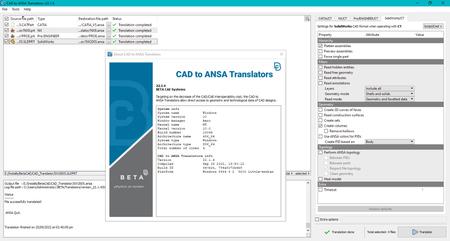
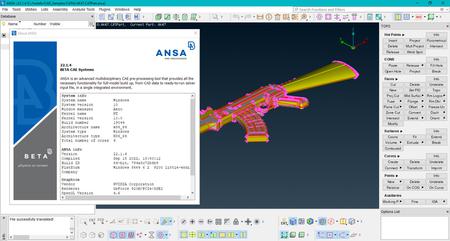
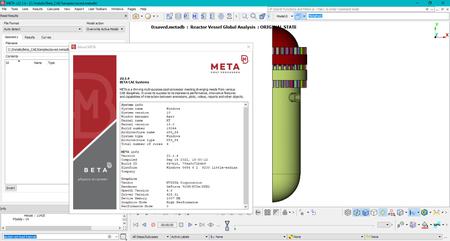
The engineers at BETA CAE Systemssee simulation as a tool that can be used to predict the future. The Swiss company seeks to offer tools for every stage of the product development process, and its vision is to stop trade-off thinking. Instead of working under the constraints of quality, time and cost, the company hopes that customers using its tools early enough in the process will be able to win in all three areas.
Working through a full development cycle can require different tools for different phases.ANSAis the preprocessor tool that accepts CATIA V4, CATIA V5, NX, Pro/ENGINEER and Jupiter Tessellation (JT) files. TheEPILYSISsolver performs structured analysis in both linear and nonlinear paths. TheMETApost-processor offers several options for framing and presenting a study, with a focus on graphics and visualization.
The new version 22.0.0 of the BETA CAE systems software suite comes with numerous new tools and features, designed to facilitate and expand your simulation processes.
ANSA v22.0.0 highlights
BETA is a simulation solutions provider,dedicated to the development of state of the art software systems. For almost 30 years, BETA has been developing tools and delivering services for the front runners of numerous sectors by listening to their needs and taking up even the most demanding challenges.

Compatibility and Supported Platforms
ANSA files saved by all the first and second point releases of a major version are compatible to each other. New major versions can read files saved by previous ones but not vice versa.
META Project files saved from version 22.1.3 are compatible and can be opened by META version 16.0.0 or later.
Support for Mac OS has been discontinued.
Support for 32-bit platforms has been discontinued for all operating systems.
Links are Interchangeable - No Password - Single Extraction
The minimum comment length is 50 characters. comments are moderated




